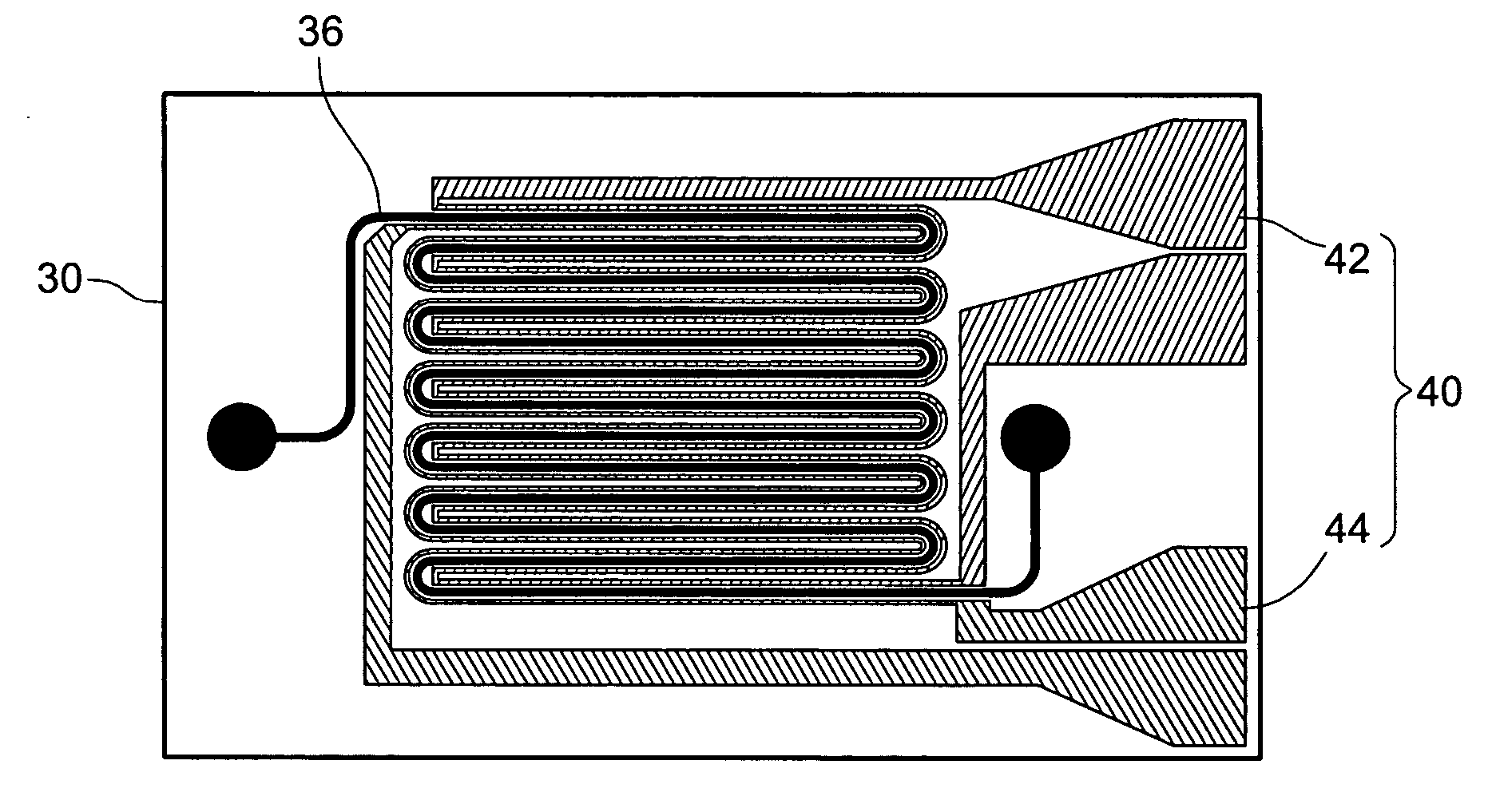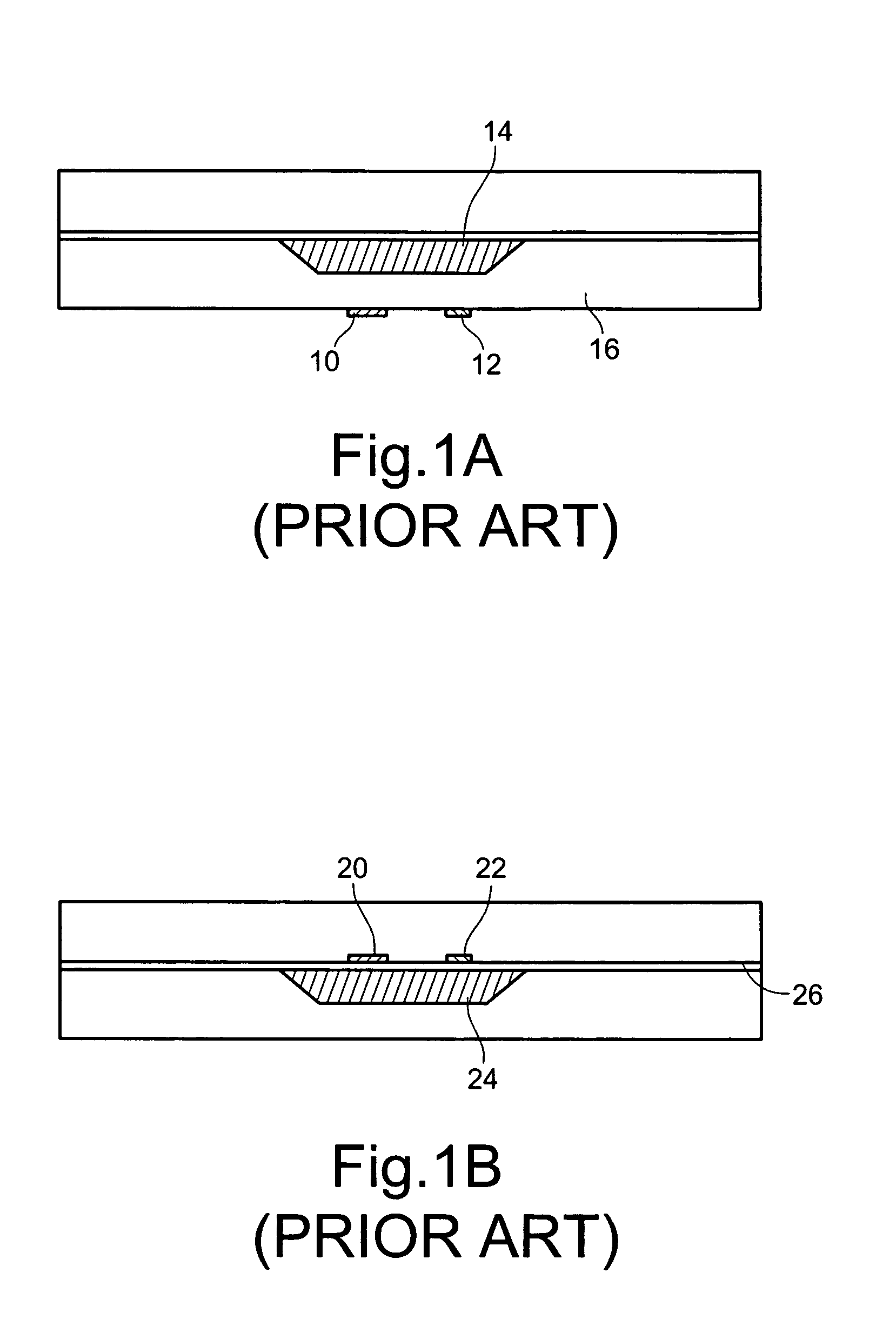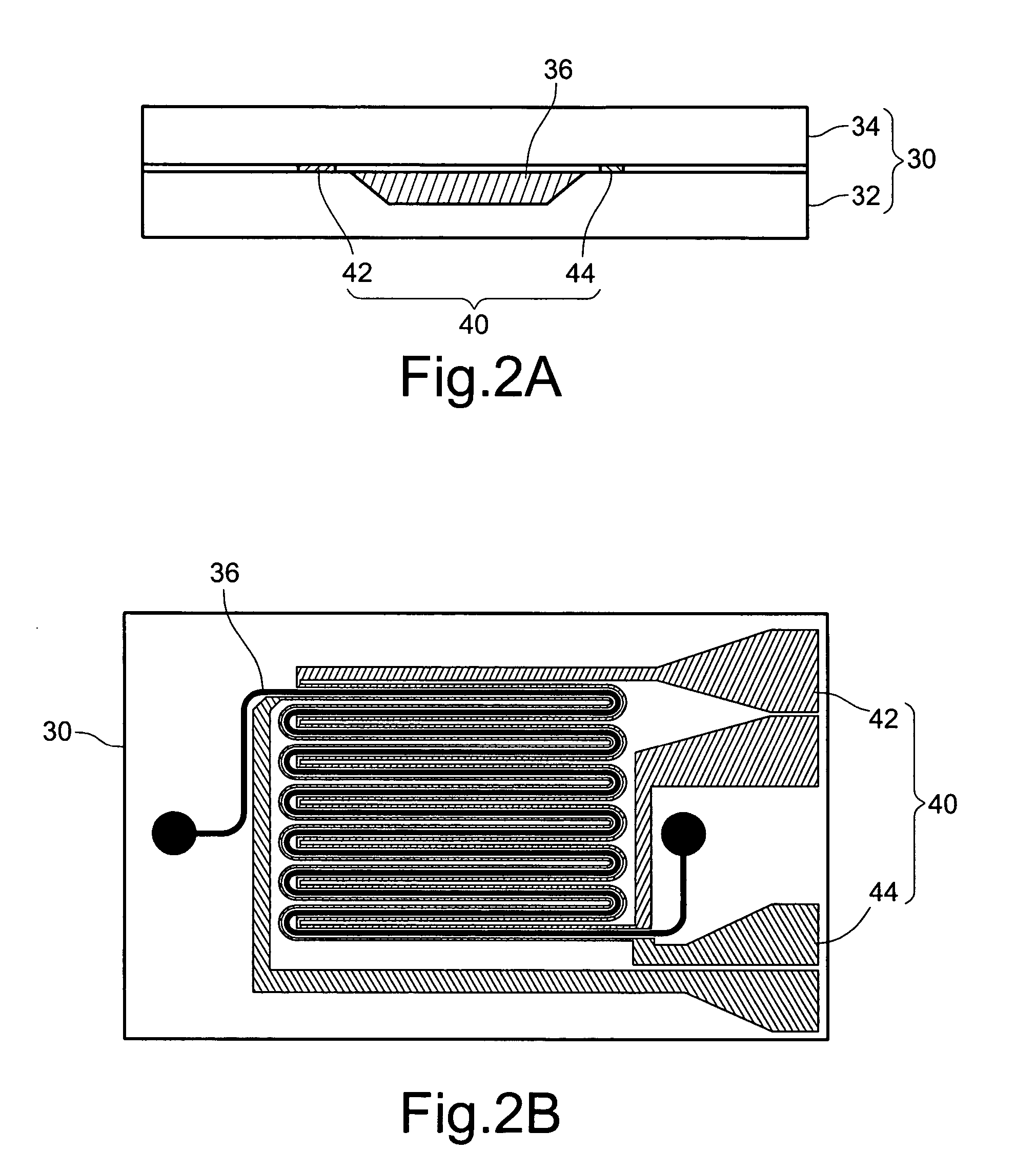Microfluidic chip
a microfluidic chip and microfluidic technology, applied in the field of microfluidic chips, can solve the problems of increasing production costs, unsatisfactory chip quality, and high equipment requirements for this process, and achieve the effects of reducing production costs, ensuring quick reaction to temperature variations, and large surface area
- Summary
- Abstract
- Description
- Claims
- Application Information
AI Technical Summary
Benefits of technology
Problems solved by technology
Method used
Image
Examples
first embodiment
[0027] Firstly, refer to FIG. 2A and 2B for the schematic diagrams of the cross section view and plane view respectively of the microfluidic chip according to the invention. Said microfluidic chip can be utilized in the chain reactions of the growth of the poly-enzyme mainly including: a main body 30 and an electrode layer 40. The main body 30 includes a first substrate 32 and a second substrate 34. A serpentine-winding shape microchannel 36 is provided on the first substrate 32, which can be used to contain the test fluid flowing therein for the experimental analysis of the cell or the sample body, by taking advantage of its feature of miniature size and fast reaction speed. For the requirement of optical observation, the main body 30 is made of glass material, having a good light transmission capability, as such facilitating the optical observation of the processing and the operation of the test fluid.
[0028] In practice, the electrode layer 40 is made of metal having a melting poi...
second embodiment
[0035] In addition, in order to increase the product utilization rate of a single wafer to reduce the production cost, the 6 mircochannel-electrode-on-chip structures, originally designed to be placed on a 4-inch wafer, are increased to 12 the mircochannel-electrode-on-chip structures. As shown in FIG. 4, it illustrates the schematic diagram of the plane view of the mircochannel-electrode-on-chip structure according to the invention. In order to obtain the optimal design, the width and the spacing of the electrode layer 50 (including the heater wire 52 and the sensor wire 54) are changed respectively, to realize the optimized temperature variations.
[0036] Moreover, in order to fully understand the effect of utilizing the various metals as the material of the electrode layer, experiments are conducted for varying the metal utilized for the electrode layer of the microfluidic chip. So chromium (Cr), gold (Au), titanium (Ti), and platinum (Pt) are sputtered respectively on the glass su...
third embodiment
[0038] In the invention, the heater wire and the sensor wire are disposed respectively along the main body on either side of the microchannel.
[0039] However, in practical applications, other designs are possible, as long as the heater wire is disposed in the vicinity of the microchannel. For example, as shown in FIG. 6A, the heater wire 70 is provided at the backside of the microchannel 72, thus constituting the fourth embodiment of the invention. In addition, as shown in FIG. 6B, the heater wire 80 is provided at the opposite side of the microchannel 82, thus constituting the fifth embodiment of the invention.
[0040] Besides, one-sided or two-sided of the main body may be made of the transparent material selected from the group including of glass, rock crystals, plastics, resins, photo resists, transparent ceramics and synthetic materials thereof. The one-sided transparent main body limits the observation scope, and the two-sided transparent main body is provided for the front and ...
PUM
| Property | Measurement | Unit |
|---|---|---|
| melting point | aaaaa | aaaaa |
| transparent | aaaaa | aaaaa |
| temperature | aaaaa | aaaaa |
Abstract
Description
Claims
Application Information
 Login to View More
Login to View More - R&D
- Intellectual Property
- Life Sciences
- Materials
- Tech Scout
- Unparalleled Data Quality
- Higher Quality Content
- 60% Fewer Hallucinations
Browse by: Latest US Patents, China's latest patents, Technical Efficacy Thesaurus, Application Domain, Technology Topic, Popular Technical Reports.
© 2025 PatSnap. All rights reserved.Legal|Privacy policy|Modern Slavery Act Transparency Statement|Sitemap|About US| Contact US: help@patsnap.com



